State Key Laboratories
1. State Key Laboratory of Disaster Reduction in Civil Engineering
Established in Tongji University in 1988, the State Key Laboratory of Disaster Reduction in Civil Engineering (SLDRCE) passed the examination of the central government in 1991. With a proven track of excellence certified regularly by the central government, it remained the only state key laboratory in the field of civil engineering in China until 2009. Focusing on seismic resistance and wind resistance of civil engineering structures, the Laboratory seeks to keep track of research hotspots in the forefront of international research while highlighting basic research and the development of technologies applicable to key projects.
Chairman of the Academic Committee |
|
Member, the Chinese Academy of Sciences Foreign fellow, the Russian Academy of Sciences Professor, Dalian University of Technology |
|
Honorary director: |
|
Member, the Chinese Academy of Engineering Professor, Tongji University |
|
Director: |
Fields of research:
● seismic resistance and control of engineering structure;
● wind engineering and control of structure;
● fire safety of engineering structure; and
● comprehensive urban disaster and mitigation.
State key disciplines and disciplines with doctoral programs:
● structural engineering;
● bridge and tunnel engineering;
● disaster prevention and mitigation engineering and disaster protection engineering;
● engineering mechanics;
● geotechnical engineering
Postdoctoral program:
● civil engineering
The Laboratory boasts the most advanced equipment in structural seismic and wind resistance that sets the benchmark for laboratories in civil engineering in China.
● A 4m × 4m table-top MTS pseudo-earthquake shaking table can reproduce the seismic wave action of six degrees of freedom, with the maximum capacity of 30 tons.
● A multi-functional shaking table array composed of four seismic simulation shaking tables supports complex seismic simulation experiments.
● A large-scale multifunctional fatigue loading system and a structural fire resistance test system of 1 000 tons have been built.
● The wind tunnel laboratory has four large, medium, and small supporting boundary layer wind tunnels, which can be used for wind tunnel tests of long-span bridges, large-scale building structures, automobile models, etc. TJ-3 wind tunnel test section is the largest boundary layer wind tunnel in the world, while the TJ-2 wind tunnel is the first automobile wind tunnel in China.
● The vibration and ground motion observation chamber is the first laboratory among China's universities to carry out strong earthquake observation and research.
For more information please visit http://sldrce.tongji.edu.cn/ (in Chinese).
2. State Key Laboratory of Pollution Control and Resource Reuse
Capitalizing on the disciplinary resources of environmental science and engineering of Tongji University and Nanjing University (NJU), the State Key Laboratory of Pollution Control and Resource Reuse boasts three state key disciplines (Environmental Engineering, Environmental Science and Municipal Engineering) and seven doctoral programs.
The mission of the Laboratory:
● Conduct basic research and high technology development on the control and utilization of environmental composite pollution;
● Explore the process and mechanism of composite pollution and its environmental implications;
● Develop high technology on pollution control with independent intellectual property rights and promote its application;
● Aim at landmark achievements in water pollution and solid waste pollution;
● Take the lead in attracting international talents and innovation groups and promoting international exchange.
● The ultimate goal of the Laboratory is to develop into a first-class international key laboratory that represents the top-class research capacity of China.
Fields of Research:
● environmental behavior and ecological effects
● theory and technology of water pollution control
● solid waste treatment and reclamation
● environmental restoration and watershed pollution control
The Laboratory strives to innovate in the pollution process and effect, pollution control, and reclamation in composite environmental systems through cross-disciplinary integration and joint efforts between Tongji and NJU towards a technological leap forward in China's environmental pollution control.
Publications:
Number of SCI-indexed papers by regular staff |
1 285 |
of which IF>5.0 |
278 |
Environmental Science & Technology |
79 |
Water Research |
51 |
ESI highly cited papers |
15 |
Number of patents |
366 |
of which international patents |
15 |
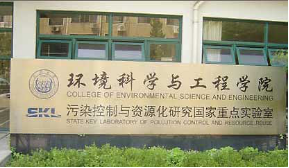
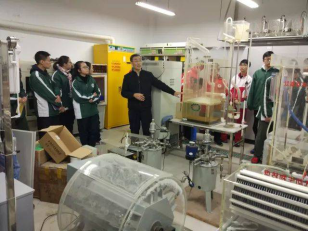
For more information please visit https://envirolab.tongji.edu.cn/ (in Chinese).
3. State Key Laboratory of Marine Geology
The State Key Laboratory of Marine Geology was officially certified by the central government in 2006 as one of the first group of state key laboratories of marine science in China. Already equipped with world-class devices for indoor analytics and an array of cutting-edge equipment with a total worth of RMB 10,000,000 (roughly USD 15,000,000), the Laboratory proudly announced the operationalization of a new experiment base of 16 000 square meters (172 222 sq ft) in Lingang, an emerging coastal hub for research, innovation and industry in Shanghai.
Highlighting the philosophy of the earth as an integral system, the Laboratory conducts deep-sea research in line with international standards with the vision of two long-term academic goals, namely, the tropical forcing of climate evolution and the geological evolution of the West Pacific.
Fields of Research:
● paleo oceanography and paleoenvironment
● deep-sea biogeochemistry
● deep-sea sedimentology
● ocean lithosphere evolution
● petroleum resources and exploration
Over 100 projects undertaken by the Laboratory has been supported by state-level research funds, especially the following top-level funds:
National Basic Research Program of China (973 Program) |
2 |
State High-Tech Development Plan (863 Program) |
7 |
Projects supported by the Key Program of the National Natural Science Foundation of China |
16 |
With the general support of all levels, the Laboratory has registered explosive progress in research and innovation in theory and methodology, making notable breakthroughs in human pursuits. In 2013, the team proposed the working hypothesis of the long-term cycle of carbon reservoirs in a paper entitled “Thin crust as evidence for depleted mantle supporting the Marion Rise” published in Nature in February 2013. This was the first time for a Chinese scholar to publish in oceanology in Nature as First Author.
Strategic scientist: |
||
Member, Chinese Academy of Sciences |
||
|
||
Member of CAS |
1 |
|
Distinguished professors |
2 |
|
Winners of the National Science Fund for Distinguished Young Scholars |
4 |
|
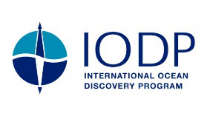
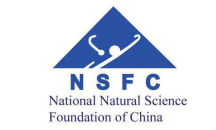
The Laboratory has successfully grown from a relatively single marine geology specialty into various branches of marine science and has made remarkable achievements in the basic research of deep-sea science, the combination of science and technology of seabed observation, and the international cooperation of marine science. This transformation is catalyzed by major international and domestic marine scientific and technological projects such as the international large-scale research plan for ocean drilling organized by the International Ocean Discovery Program (IODP), the key research project "Evolution of Deep Sea Process" of National Natural Science Foundation of China and China’s Big Science Project" National Long-term Marine Science Observation System". Echoing China’s response to the international context, these transformations and have played a leading role in the internationalization efforts of China's marine science.
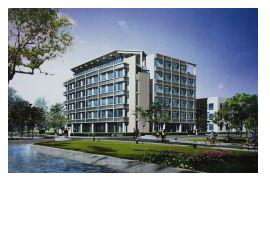
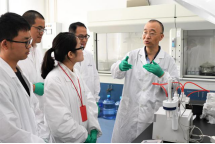
For more information please visit http://mlab.tongji.edu.cn/ (in Chinese).
